YEAR ONE of new management, this will be added to each year as we work towards our wildflower meadow
Site
Ampney St. Mary Church – ‘The Ivy Church’, Ampney St. Mary, GL7 5RU
Aim
‘We have quite a large area of ground with no monuments on it and wanted to manage this in an environmentally friendly way. In particular we wanted to reduce the use of fuel in mowing and to enhance the interest for our frequent visitors, many of whom come to see the historic church. We decided to have an area of long grass, managed as a wildflower meadow’.
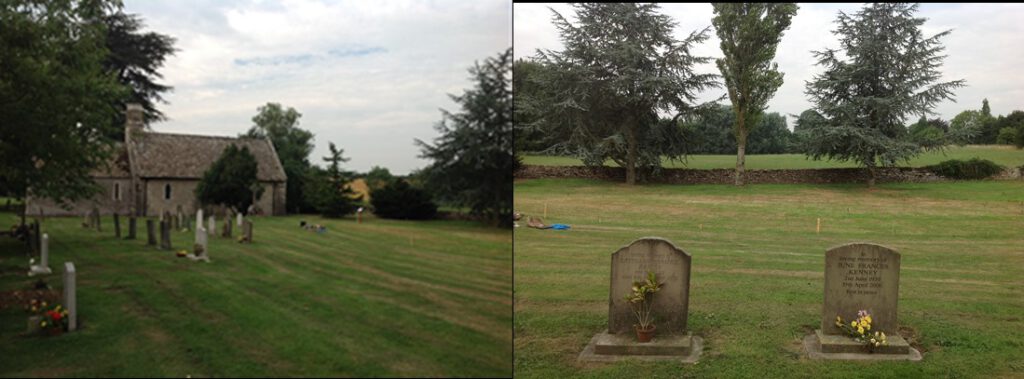
Action
Step 1
There was concern within the PCC that having a wildflower meadow would be difficult and costly and that it would be necessary to strip off the topsoil in order to get wildflowers established. We phoned Caring for God’s Acre who gave initial advice, not to strip the soil but to leave an area uncut and see what came up. A historic site like Ampney St Mary would have historic grassland full of interest already. So an initial area for long grass was agreed within the PCC and Pam designed the shape of the area so that it would look managed and intentional. Part of the area will be managed as wildflower meadow and part as tussocky grass. These areas were marked out with wooden pegs to make it clear where to mow.
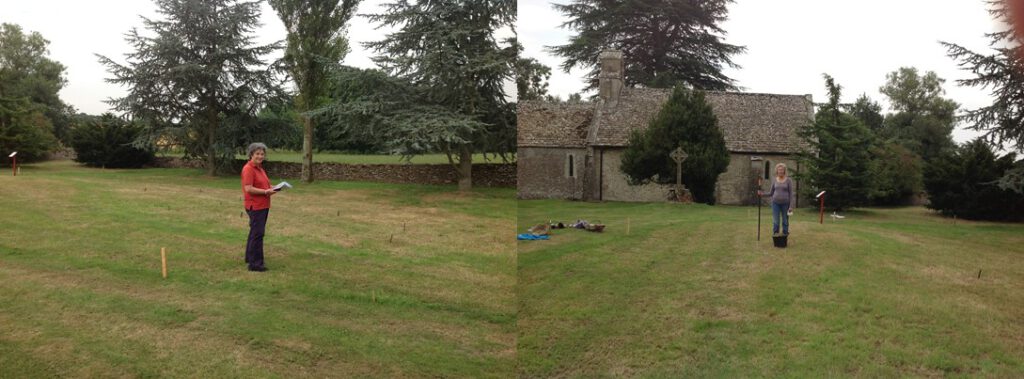
See the attached document for Pam’s plan
Step 2
We put up a notice explaining why the grass was not being regularly mown and what the plan is.
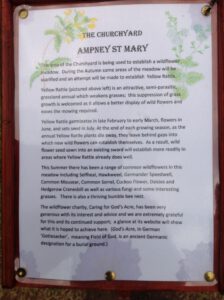
Step 3
Pam (who is a keen gardener and botanist) recorded what plants grew up and flowered. There are several species present and the area looked attractive. Mown paths through the long grass allowed people to explore!
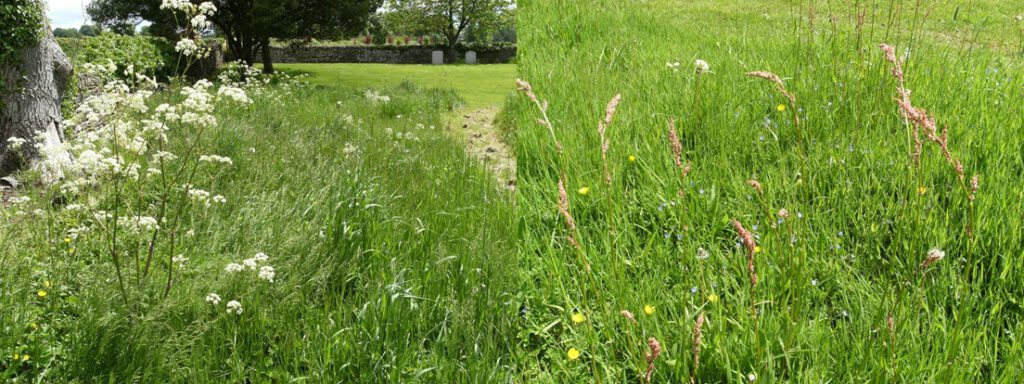
The whole area was cut in mid August and all arisings raked up and removed by a helpful neighbour to a local diary farm.
Step 4
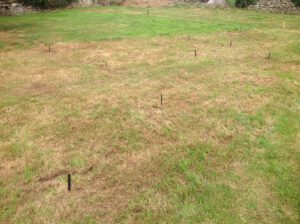
Following more advice from Caring for God’s Acre the decision was made to plant Yellow Rattle seed in order to weaken the grass and encourage the flowering plants. Harriet advised looking on the Flora Locale website to find local seed suppliers. Seed was bought from Wiggly Wigglers in Herefordshire with more Yellow Rattle and Ragged Robin seed donated from elsewhere. The Yellow Rattle has been planted in 3 different way; different times in the year and levels of scarifying. These patches have been marked with labels and we will keep you informed as to what works best.
Step 5
There are plants present which suggest that the ground is fairly wet (Cuckoo Flower or Ladies Smock in particular) and so we are considering planting some more species which might thrive in these conditions, Snake’s Head Fritillary in particular, which could become part of an area of spring bulbs.
Costs and Income
Costs – some Yellow Rattle seed was bought but much of it was donated.
Income – none
Results and Benefits
In year 1 long grass has been established in a clearly marked out area. Over 20 different plant species have been identified. The long grass was cut with strimmers and arisings removed successfully and Yellow Rattle has been planted.
Local interest has been raised, generally positive once some initial concerns had been calmed. Local people have started collecting the seed of wild flowers which they like, such as ox-eye daisy.
Issues and Lessons Learnt
It would have been helpful to have produced notices and given out more information in advance of anything happening on the ground.
Articles in the parish magazine would have been helpful.
Conclusions and Next Steps
We are keen to have a scything course next year and plan to see if there is enough local interest to run one.
We need to think further as to how to use the grass or hay from the cut. Finding more farmers able to take the grass is a possibility as is making and baling hay with either a hand baler or small machinery suitable for the site.
We are keen to repair a dry stone wall using volunteers.
We plan to build compost bins for the grass cuttings (from the areas managed as short grass, not the large amount generated by the long grass cut) probably using pallets and stakes.
Further Information
This site is quite close to North Meadow Cricklade, a National Nature Reserve which has the largest population of Snake’s Head Fritillary in Britain. A visit and chat with the staff would be worth doing.
Caring for God’s Acre can advise on skilled people to lead both scything training and also dry stone walling.
Click here to download a copy of the Church Plan: Churchyard plan October 2013






